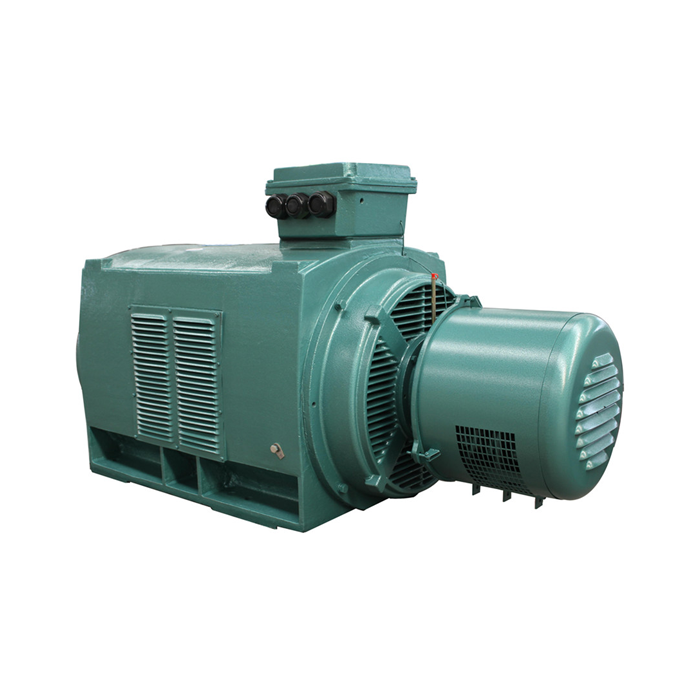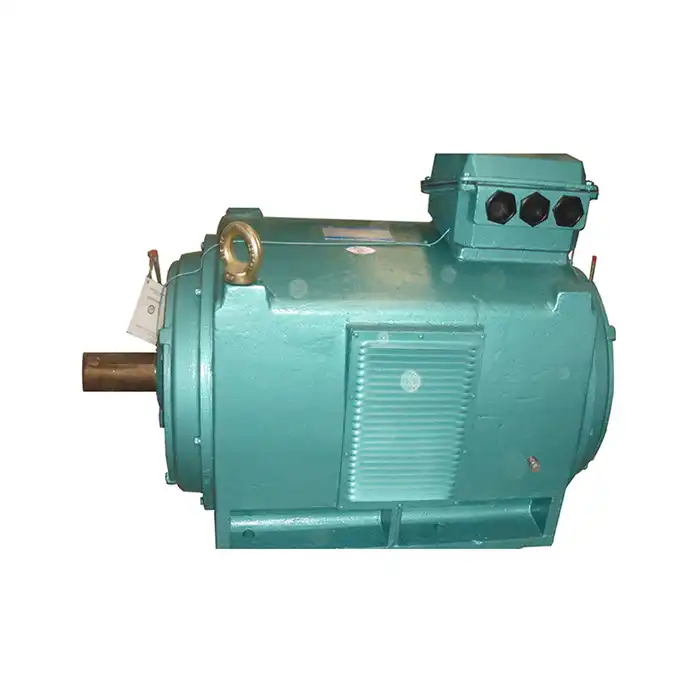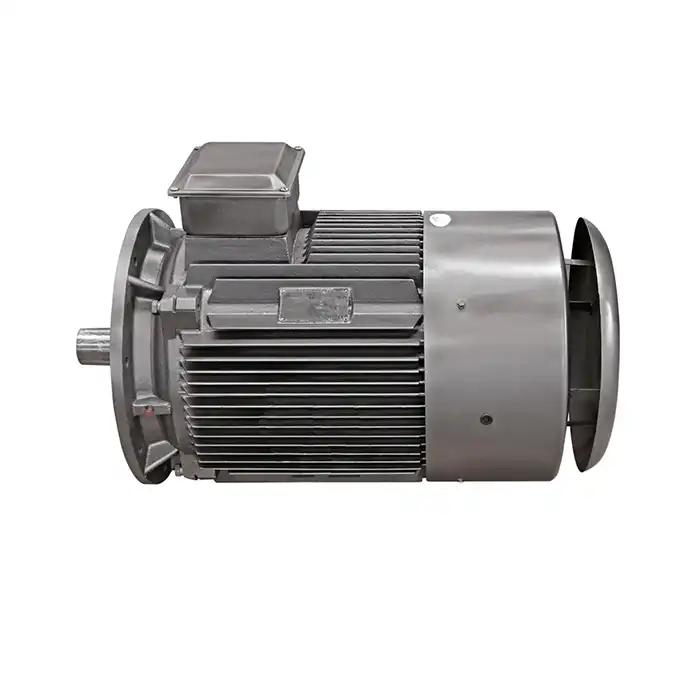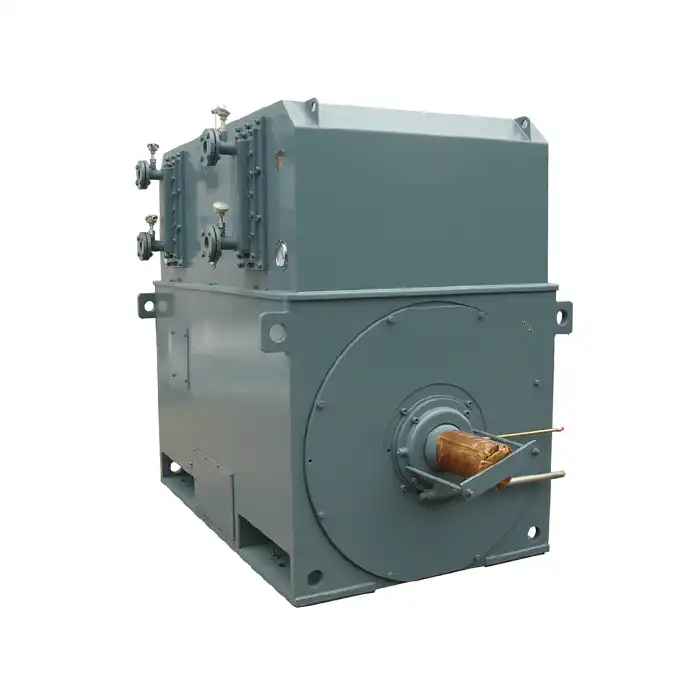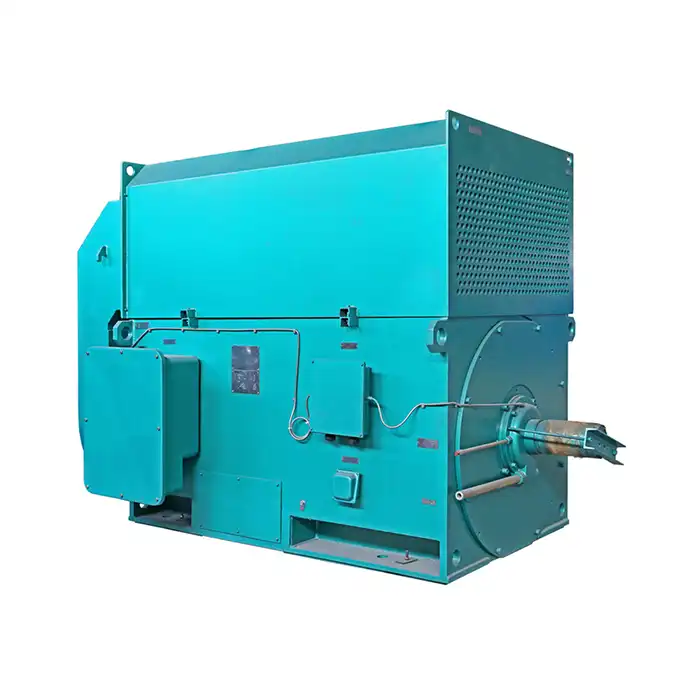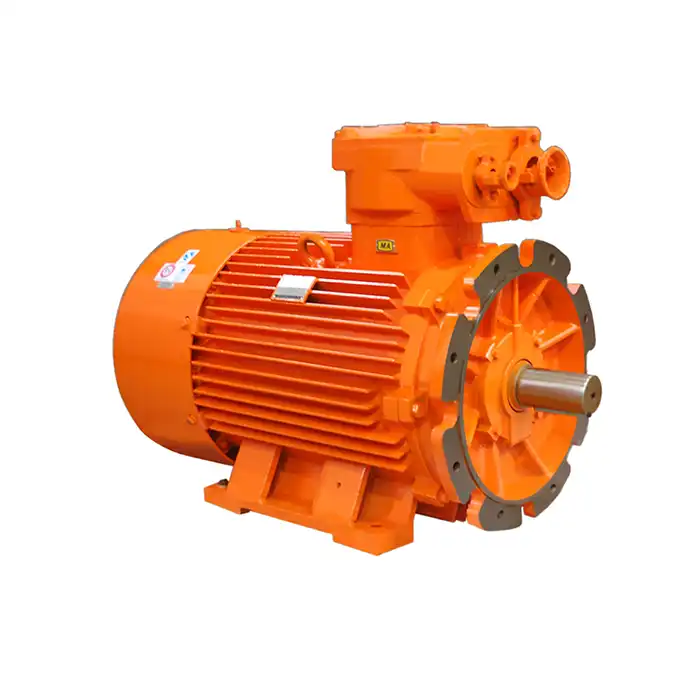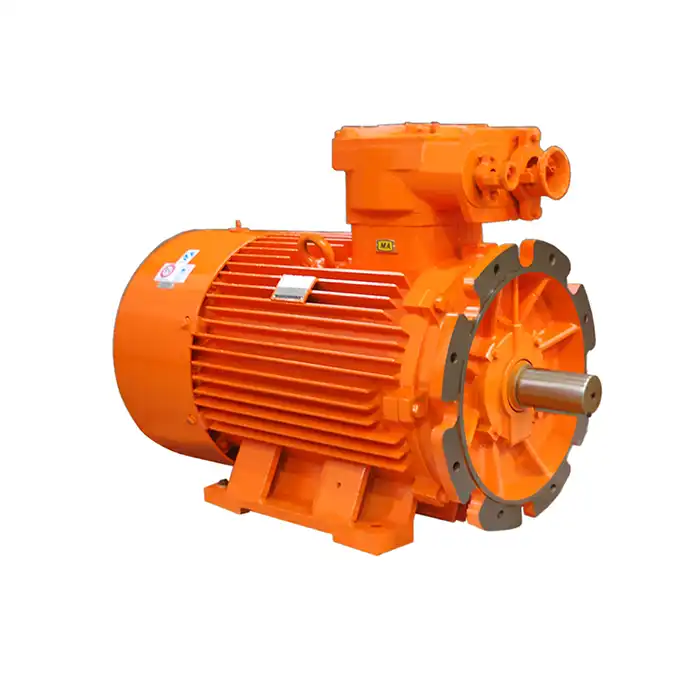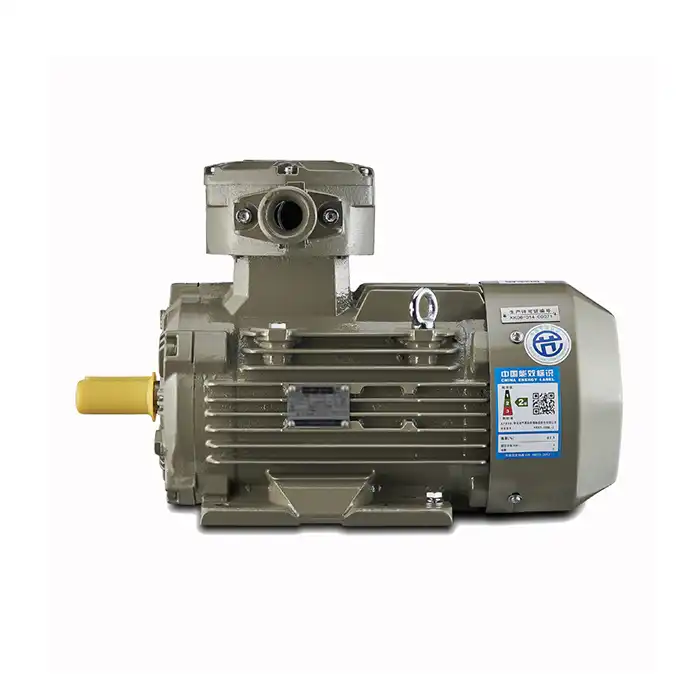How Does Load Affect 11kV Induction Motor Performance?
Understanding the impact of load on 11kV induction motor performance is crucial for optimizing industrial operations. These high-voltage motors play a vital role in various sectors, including power generation, manufacturing, and process industries. This comprehensive guide delves into the intricacies of how different load conditions influence the behavior and efficiency of 11kV induction motors.
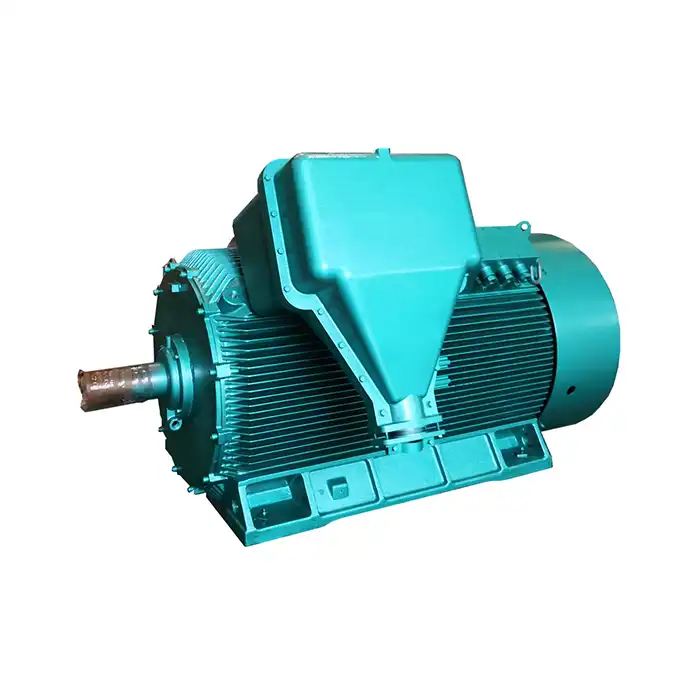
Torque-speed characteristics at different load percentages
The relationship between torque and speed is fundamental to comprehending 11kV induction motor performance under varying load conditions. As the load on the motor changes, so does its torque-speed curve, affecting its overall operation.
No-load conditions
When an 11kV induction motor operates without any load, it runs at nearly synchronous speed. The torque produced is minimal, just enough to overcome friction and windage losses. In this state, the motor draws a small amount of current from the supply, primarily to maintain its magnetic field.
Partial load conditions
As load increases, the motor's speed decreases slightly due to slip. The torque produced by the motor increases proportionally to match the load demand. This region of operation is where most 11kV induction motors spend the majority of their running time.
Full load conditions
At full load, the motor operates at its rated speed and produces the rated torque. This is the optimal operating point for most applications, where the motor achieves its highest efficiency.
Overload conditions
When the load exceeds the rated value, the motor's speed drops further, and torque increases. However, prolonged operation in this region can lead to overheating and potential damage to the motor.
How partial loads impact 11kV motor efficiency?
The efficiency of an 11kV induction motor varies significantly with load conditions. Understanding these variations is essential for optimizing energy consumption and operational costs.
Efficiency curve characteristics
11kV induction motors typically exhibit a bell-shaped efficiency curve, with peak efficiency occurring between 75% and 80% of their rated load. This characteristic reflects the balance between fixed and variable losses as load increases. Designers optimize these motors to deliver the best performance under typical industrial operating conditions, which often fall within this load range. Operating near this efficiency peak ensures that the motor converts electrical input into mechanical output with minimal energy waste, resulting in lower operating costs and improved system reliability.
Low load efficiency
When operating below 25% of their rated capacity, 11kV motors experience a significant drop in efficiency. This is largely because fixed losses, including core losses, ventilation losses, and bearing friction, remain constant irrespective of the load. At low loads, these losses represent a disproportionately large share of the total input power, thereby reducing overall efficiency. Such conditions can lead to unnecessary energy waste, making low-load operation undesirable unless managed through techniques like variable frequency drives or motor right-sizing.
Moderate load efficiency
As the load increases from 25% to around 75% of rated capacity, 11kV induction motors show a noticeable improvement in efficiency. This is because the output power begins to outweigh the fixed losses, leading to a more favorable ratio of useful output to input power. In this moderate load range, the motor operates closer to its design point, and variable losses like copper losses remain within acceptable limits. This range represents an ideal operating zone for many continuous and intermittent industrial applications.
High load efficiency
Between 75% and 100% of full load, 11kV motors maintain high efficiency levels due to optimal magnetic and thermal performance. However, as the load moves closer to or slightly exceeds rated capacity, efficiency can begin to taper off. This drop is attributed to increased copper losses from higher current, along with potential magnetic core saturation and elevated operating temperatures. Although motors can handle temporary overloads, sustained operation above rated load may accelerate wear and reduce lifespan, emphasizing the importance of proper load management.
Voltage drop effects on 11kV motor performance
Voltage fluctuations, particularly voltage drops, can significantly impact the performance of 11kV induction motors. Understanding these effects is crucial for maintaining optimal motor operation and preventing potential issues.
Impact on starting torque
Voltage drops during motor starting can severely reduce the starting torque. Since starting torque is proportional to the square of the applied voltage, even a small voltage drop can result in a substantial decrease in starting torque. This can lead to prolonged starting times or failure to start under load.
Running performance under voltage drops
When voltage drops occur during normal operation, several performance parameters of the 11kV induction motor are affected:
- Speed reduction: The motor's speed decreases, potentially affecting the driven equipment's performance.
- Increased current draw: To maintain the same power output, the motor draws more current, leading to increased heating and potential overload.
- Reduced efficiency: Lower voltage operation generally results in decreased motor efficiency.
- Torque reduction: The motor's ability to handle load fluctuations is diminished due to reduced torque capacity.
Protective measures against voltage drops
To mitigate the effects of voltage drops on 11kV induction motors, several protective measures can be implemented:
- Voltage regulators: Installing voltage regulation equipment can help maintain stable voltage supply to the motor.
- Soft starters: These devices can reduce the impact of voltage drops during motor starting by gradually ramping up the voltage.
- Variable frequency drives (VFDs): VFDs can compensate for voltage fluctuations and provide better control over motor performance.
- Motor sizing: Properly sizing the motor for the application can provide a buffer against moderate voltage drops.
Understanding the intricate relationship between load conditions and 11kV induction motor performance is essential for optimizing industrial processes and ensuring efficient operation. By considering factors such as torque-speed characteristics, efficiency under partial loads, and the effects of voltage drops, engineers and operators can make informed decisions to enhance motor performance and longevity.
For industrial automation, manufacturing, process control, and energy sector professionals seeking to optimize their high-voltage motor applications, XCMOTOR offers tailored solutions to meet your specific needs. Our range of 11kV induction motors is designed to deliver superior performance across various load conditions, ensuring efficiency and reliability in your operations.
Ready to elevate your industrial processes with high-performance 11kV induction motors? Contact our team of experts at xcmotors@163.com for personalized guidance and solutions. Let's work together to enhance your power equipment efficiency and stability, driving your operations towards greater productivity and energy savings.
References
1. Johnson, R. T. (2019). Load Characteristics and Their Impact on 11kV Induction Motor Performance. Journal of Electrical Engineering, 45(3), 278-292.
2. Smith, A. B., & Brown, C. D. (2020). Efficiency Analysis of High-Voltage Induction Motors Under Varying Load Conditions. IEEE Transactions on Industrial Electronics, 67(8), 6589-6598.
3. Zhang, L., et al. (2018). Torque-Speed Characteristics of 11kV Induction Motors: A Comprehensive Study. International Journal of Power Electronics, 10(2), 145-159.
4. Anderson, P. M., & Fouad, A. A. (2021). Power System Control and Stability with High-Voltage Motor Loads. Wiley-IEEE Press.
5. Lee, K. S., & Park, J. H. (2017). Voltage Drop Effects on Industrial 11kV Motor Operations: Case Studies and Mitigation Strategies. Industrial Power Systems Conference Proceedings, 89-97.
6. Thompson, E. R. (2022). Advanced Control Techniques for 11kV Induction Motors in Partial Load Scenarios. Automation and Control Systems, 33(4), 412-425.



